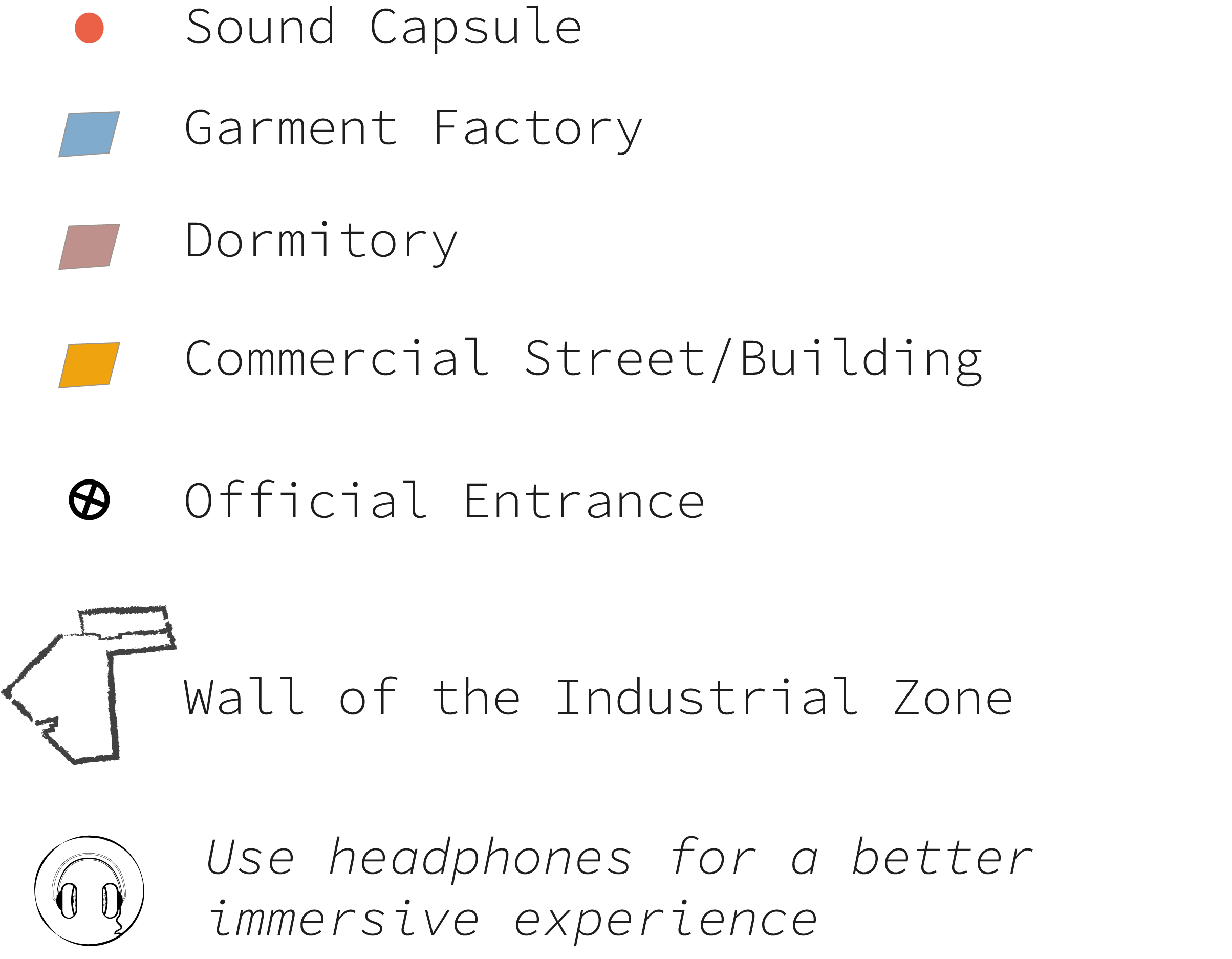Jordan first became a major clothing production location when a 1996 US preferential trade agreement guaranteed duty-free access to the American market for Made-in-Jordan garments. Since then, multi-national garment producer firms have relocated production facilities to Jordan’s industrial zones, importing production materials like cloth and accessories from Asia to sew clothes in Jordanian factories. 75% of the approximately 80,000 workers fabricating clothing in Jordan’s factories are migrant workers, the vast majority of whom are recruited on 3-year contracts from various countries in South Asia.
The foreign workers only receive part of their meagre salaries as cash wages because money is deducted for accommodation in dormitories and canteen food supplied by the employers. Jordan’s industrial zones thus today resemble secluded factory and dormitory cities that concentrate a diverse migrant population. This sound map offers you an immersive experience of Al-Hassan, Jordan’s largest clothing production zone
Read More about Jordan’s clothing industry





This map invites you to discover life and labour in a global garment production site. It offers insight into the everyday rhythms, routines and rituals that characterize life in a dormitory migrant labour regime.
Approximately 30.000 factory workers sew garments for American sports and outdoor brands in Jordan’s largest industrial zone for clothing production. Over two thirds of them are migrant workers, recruited from Bangladesh, India, and other countries in South Asia; as well as from Madagascar. They live in dormitories beside the factories and spend most of their time inside or in the immediate surrounds of the walled industrial zone.
Click on the red points on the map to enter the sonic and visual universe of a globally connected, yet locally secluded industrial zone that usually remains inaccessible to outsiders.
The sonic and visual universe you can navigate on this map is first and foremost the outcome of two weeks of intensive research, recording and drawing in and around the Al- Hassan industrial zone in the North of Jordan in April 2025.
David Lagarde – geographer, independent cartographer and sound artist
Mélanie Forné – archaeologist, graphic designer and independent illustrator
Katharina Grüneisl – geographer and lead researcher in Jordan for the Invisible Women Invisible Workers research project
Sara Lana – artist and interactive maps developer
Behind the Scenes of this Sound Map
And for sound only find the album here






